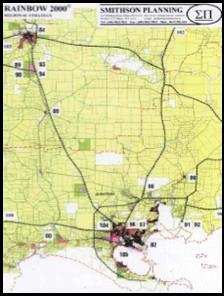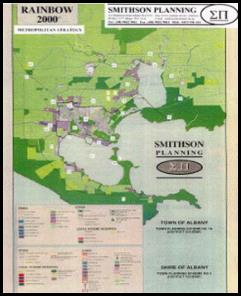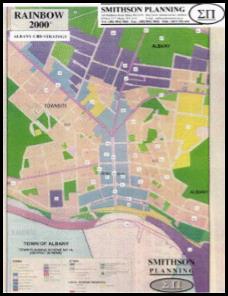|
Planning Initiatives Mapping © 1997 For more information, down load these files via WinZip as MS Word, JPG or PDF. A general disclaimer applies to this material – don’t assume – please ask. |
|
DOCUMENTATION
Community Participation v R2000 Participation 1997-2006 v R2000 Participation 2007-2008 v R2000 Participation 2009-2010 v R2000 Participation 2011-2012 v R2000 Participation 2013-2014 v R2000 Participation 2015-2027
Conference Papers
Government Submissions v Infrastructure Australia 2008 v Infrastructure Australia 2010
A general disclaimer applies to this material – don’t assume – please ask.
|
|
Planning initiatives – 116 employment generators.
It was necessary in the context of Albany to address simultaneously all three spatial levels of planning analysis, and it is only when you do so that the inherent conflict between land uses is capable of resolution. For thirty years, the port and city (through the City, Shire and Town councils) have remained at logger-heads over how to use and develop the foreshore area adjoining the central business district without restricting port expansion. There are 18 examples around Australia where sea ports have had to relocate due to urban encroachment, and about 60 regional cities where the big new shopping centre on the edge of town has had a significant detrimental impact on the traditional main street central business district. Albany will be no different – it is a question of time. Sea port relocation is advocated because it provides a 100 year growth path for the two best economic assets in the region – the Port & CBD (go to next page for both sea and air port plans). Of course, there is always an alternative outcome - two in fact - either the port stays put and gets the access it needs long-term (which would sacrifice the city, waterfront, Anzac and the bicentennial) or it does not as a function of city and waterfront development (which then compromises the economic future of the region, rural industries and export commodities). There is no half measure solution, despite what the Port Authority, Albany City Council and the Ministers for Planning or Infrastructure might like to think. It would require a courageous community of a small city (with the aid of government) to tell the rest of Australia “we don’t care about Anzac or the western bicentennial — we have to export grain to Iraq, iron-ore to China, and woodchips to Japan.” International Trade versus National Cultural Heritage - awesome.
The Rainbow 2000 Project is a private planning strategy that has not been endorsed by any level of governance in Australia, which is exactly what makes it particularly relevant and very challenging for governance, industry & community.
Albany Sea Port Relocation Plan Albany International Airport Plan Rainbow 2000 10th Anniversary Project Evaluation |


















|
Albany, Western Australia
|
